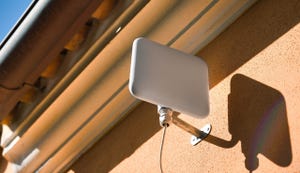The VR market just had another dismal quarter
The wait goes on for a turnaround in the struggling augmented/virtual reality (AR/VR) market, after first-quarter shipments slumped once more.
June 21, 2024

Figures from IDC suggest volume plunged 67.4% year-on-year, and to make matters worse, the decline is accelerating.
In the first quarter of 2023, shipments were down 54.4% on Q1 2022. Back then, IDC wasn't prepared to share how many units were shipped. Fast-forward to today – and with the AR/VR market still in the doldrums – unit volumes still don't merit a mention in IDC's research note.
You have to go back to full-year 2022, when IDC claimed that shipments reached 8.8 million (which incidentally represented a decline of 21% on 2021) and work forwards from there with some back-of-the-envelope calculations to get a rough idea of where the market stands today.
Putting it in technical terms, the AR/VR market is in the toilet.
With that full-year 2022 figure as a starting point, it suggests that Q1 2023 shipments were less than 1 million. That's probably optimistic, given Q1 is normally the quarter for belt-tightening for a lot of households, not for spending money on a new VR headset.
Based on that, a 67.4% decline from less than 1 million equates to unit volumes of little more than 300,000 – don't forget this is globally – in the first three months of 2024. In telecoms, numbers like this are sometimes referred to as 'not meaningful'.
Driven by Apple's expensive Vision Pro mixed reality (MR) headset, and Meta pushing its flagship Quest 3, average selling price (ASP) surged above $1,000 – way above where they need to be to stimulate mass-market take-up. Putting that into perspective, in 2022, IDC projected that by 2024, ASPs would be less than $440.
This time round, IDC said the shipment decline was expected because the market is transitioning to include new categories, including mixed reality (MR) and extended reality (XR). As these categories mature – and as pure-play VR headsets fade away – ASPs will fall and the market will pick up again.
"Looking ahead, we anticipate ASP erosion across all products," said Ramon Llamas, research director with IDC's augmented and virtual reality team. "
"Because the overall market is still in its early stages with more expensive first- and second-generation devices, prices will be high even as early adopters buy them," he continued. "In order to reach scale in the mass market, vendors will need to reduce prices on later and upcoming devices."
With this in mind, IDC expects global AR/VR shipments to pick up throughout the remainder of the year, and for overall 2024 volumes to grow 7.5% on 2023.
However, given how the market has performed in recent years, it wouldn't be a surprise if that forecast proves to be a little optimistic.
About the Author
You May Also Like










.png?width=300&auto=webp&quality=80&disable=upscale)


_1.jpg?width=300&auto=webp&quality=80&disable=upscale)